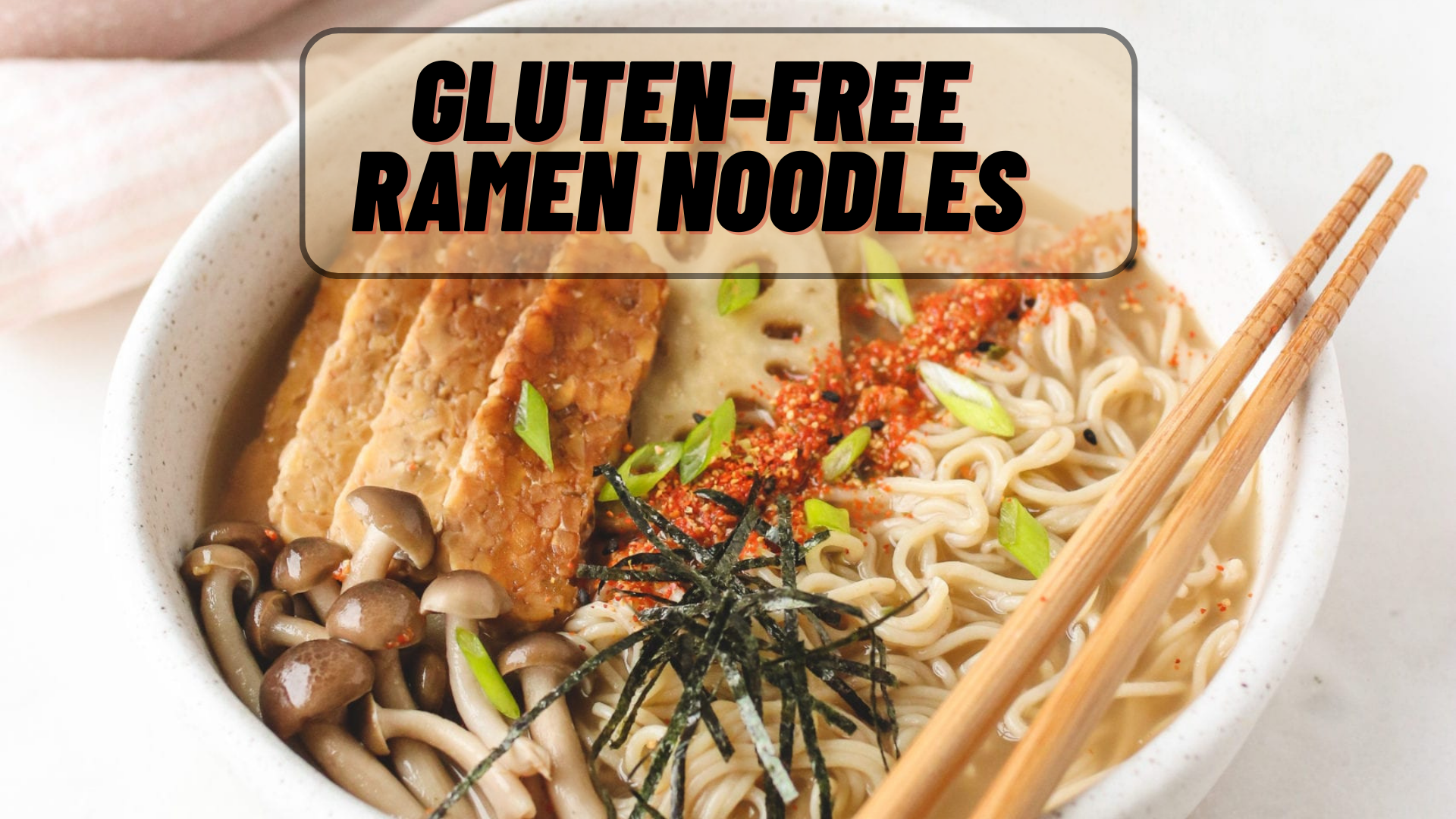Gluten-free Ramen Noodles
So many people rely on ramen for lunches or fast meals since it’s so quick and straightforward. Instant soup packets may be lifesavers when you don’t have much time for anything else.
Maybe you’ve heard incredible things about a neighborhood ramen shop, but you’re unsure if the noodles are safe for your gluten-free diet. You may be asking if ramen is the same as other noodles, such as semolina pasta, which is high in gluten. We all have the same questions, no matter the motivation for wanting to know why.
Is gluten found in ramen noodles? What solutions are available for those of us who must avoid gluten but want the real thing? The ingredients used to make ramen noodles, their gluten-free status, the best ramen noodle brands, and more will be covered in this piece.

What kind of ingredients goes into making ramen noodles?
Even though ramen may be prepared in a wide variety of ways using a wide variety of ingredients, the typical components for these noodles include wheat flour, salt, oil, and several additional seasonings. I’ve recently discovered that there are wide distinct varieties of ramen noodles. Some do not contain eggs, while others do not have any seasoning on them.
So much information must be absorbed to correctly prepare ramen noodles that I could spend an entire day attempting to comprehend the science behind them. But to tell you the truth, I’m only here to answer questions and find solutions for myself.
Gluten-Free Ramen Noodle Brands.
Several different manufacturers produce ramen noodles that are free of gluten. You’ll discover that these brands share a few characteristics in common, including the following:
• Instead of wheat, rice flours, and starches are used in their preparation.
• Few of them come with a spice packet, which is something that is typically included in gluten-y commercial ramen brands.
• Gluten-free ramen noodles typically have a more streamlined ingredient list, and you will encounter less frequently used seasonings and additives like MSG.
1. Lotus Foods Rice Ramen
Lotus Foods is now the market leader in gluten-free ramen noodles. The manufacturer creates a millet and brown rice ramen that is equally tasty when combined with broth and when served on its own.
You may get ramen noodles from Lotus Foods in the form of individually wrapped nests accompanied by a soup packet. Alternatively, if you purchase the millet and brown rice bag in bulk from Costco, you will just receive the ramen e squares without the soup seasoning packet.
2. Thai Kitchen
Thai Kitchen is another company that produces gluten-free varieties of ramen noodles. The firm creates individual servings of ramen soup in packaging designed to give the appearance of instant ramen soup.
3. Pamela’s
You may have fond memories of consuming Cup O’Noodles Soup made by a company called Nissin Foods. You just need to add some hot water to the cup, and in a few minutes, you’ll have a portable ramen soup that you can enjoy on the move.
Even though you can no longer enjoy Cup O’Noodles in its traditional form, Pamela’s creates a beautiful gluten-free ramen soup in a cup you can take on the go. It’s easy to transport, tastes well, and makes for the ideal supper in an emergency or when you’re on the road.
4. Big Green Organic Food
Big Green Organic Food uses a wide choice of flour that does not include gluten in the production of their gluten-free ramen noodles. In addition to producing sorghum ramen, the firm also makes millet ramen, black rice ramen, brown rice ramen, and buckwheat ramen. Sorghum ramen is one of the company’s most well-known products.
Remember that buckwheat is a grain that does not contain gluten and is frequently used to produce Japanese soba noodles. Buckwheat soba noodles are gluten-free unless the maker also adds wheat flour to the product, which is not gluten-free. Carefully read all of the labels.
5. Mr. Lee’s Noodles
In addition to replacing quick cup noodles, Mr. Lee’s Noodles are created with gluten-free rice ramen and a wide selection of flavors traditionally used in Thai cooking. Not only are Mr. Lee’s noodles free of gluten, but they are also free of artificial colors, chemicals, tastes, and MSG. Additionally, the packaging for Mr. Lee’s noodles is 100 percent recyclable, and no plastic spice packets are included.
Is Top Ramen gluten-free?
The “enhanced flour” created from wheat flour is listed as the first component of every package of Top Ramen. Unfortunately, the only items that can be purchased under this name are not suitable for consumption on a gluten-free diet. If you are looking for a gluten-free alternative to Top Ramen, you may give one of the brands mentioned above a try.